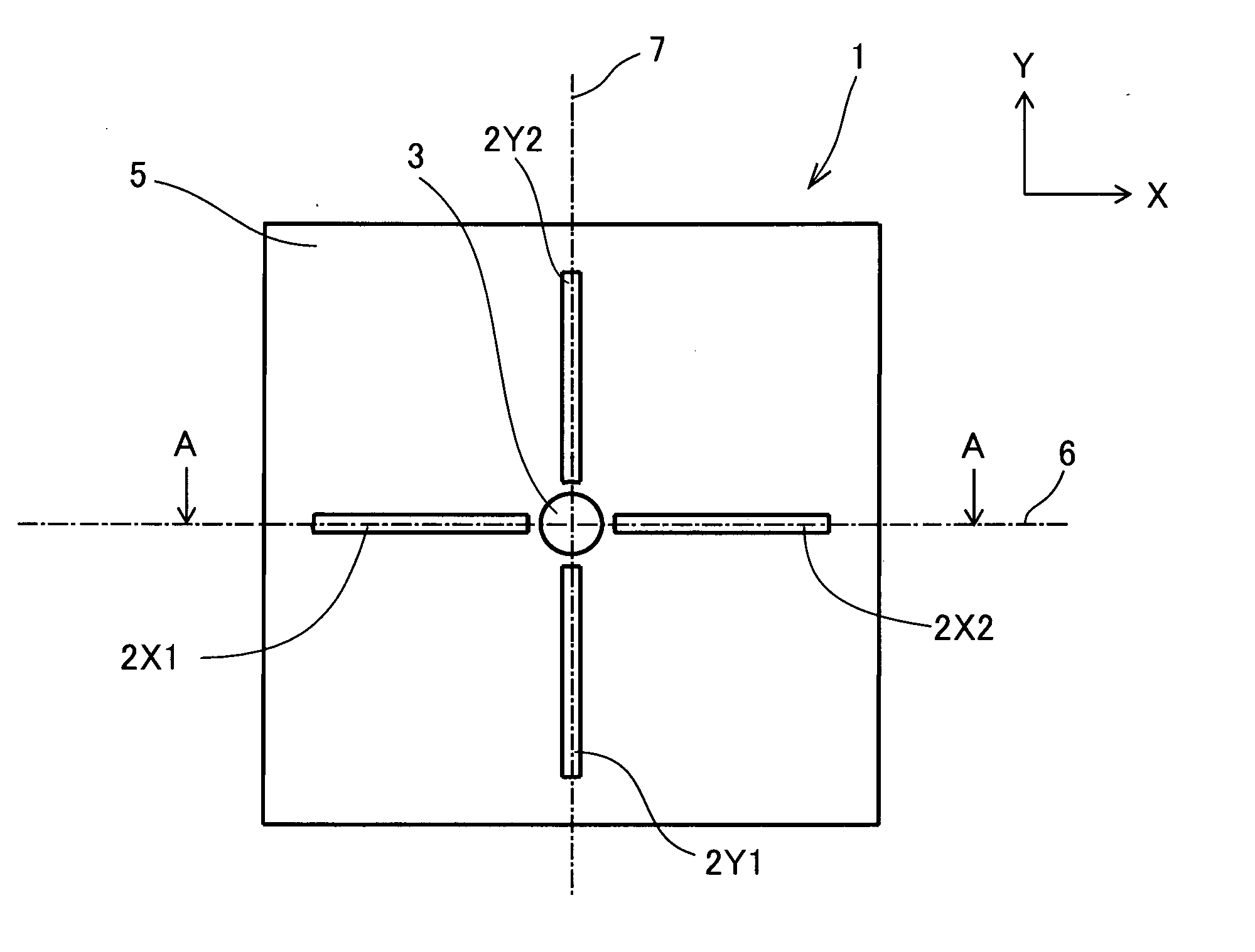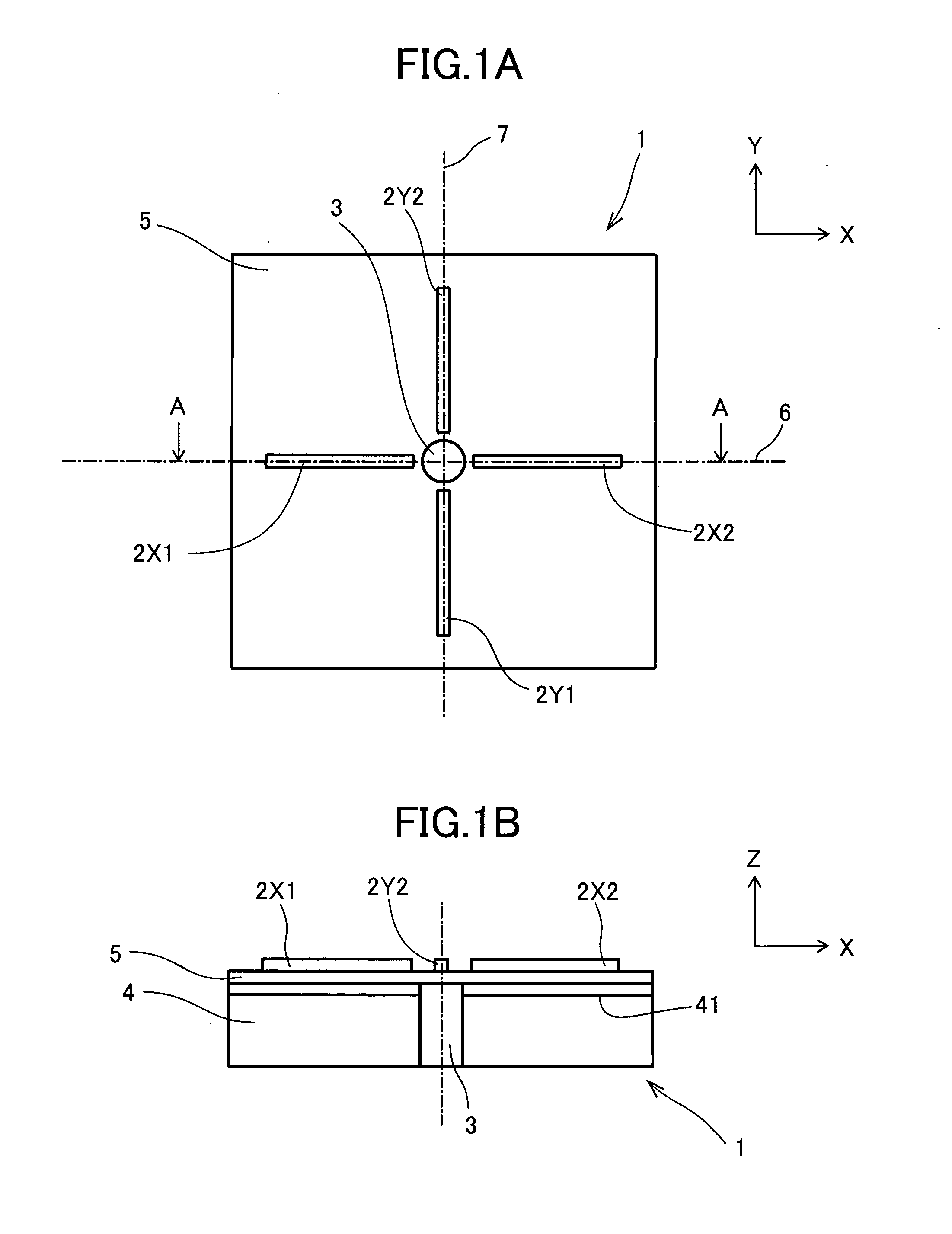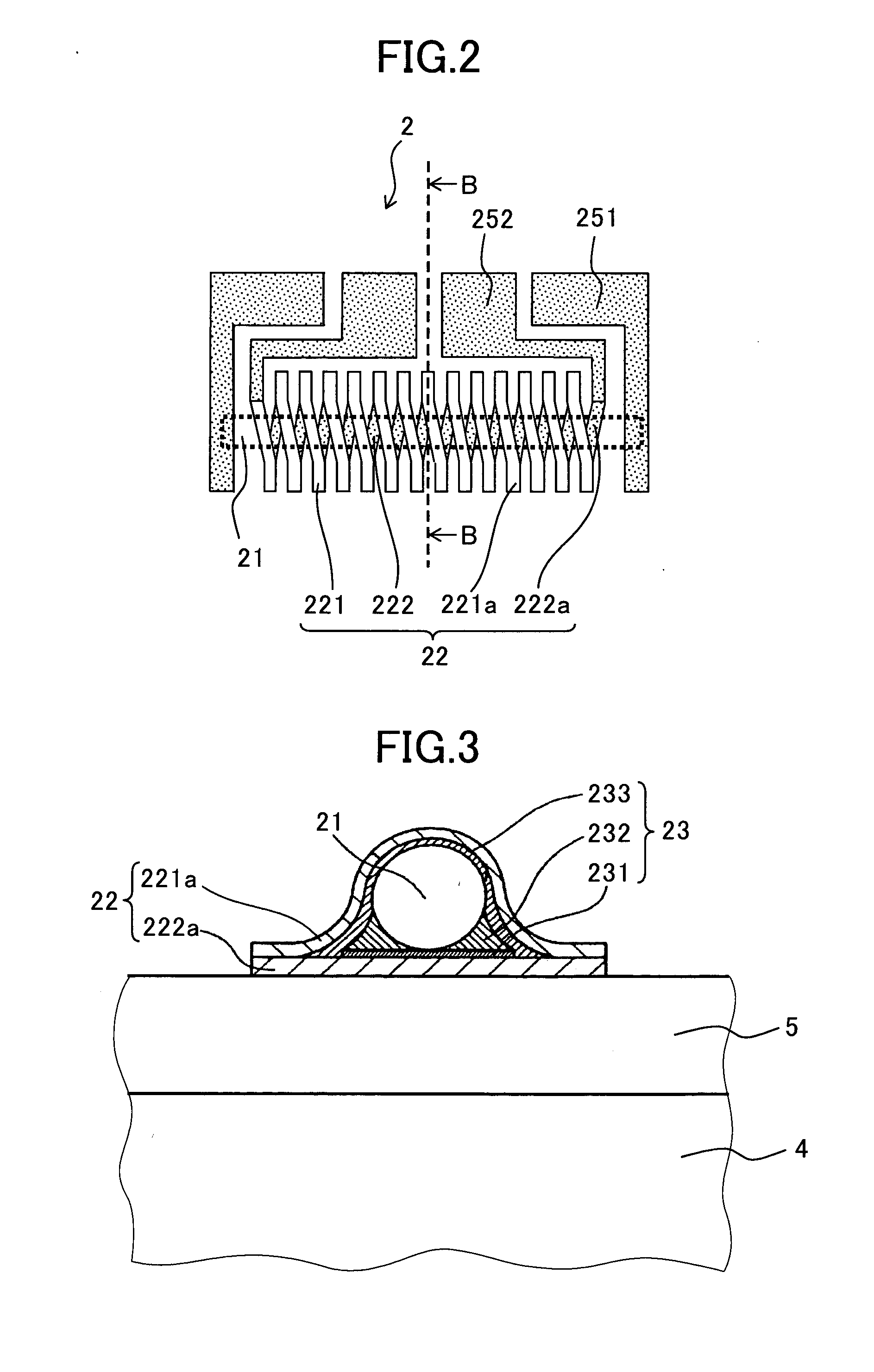Magnetic detection device
- Summary
- Abstract
- Description
- Claims
- Application Information
AI Technical Summary
Benefits of technology
Problems solved by technology
Method used
Image
Examples
embodiment 1
[0081]A three-dimensional magnetic detection device 1 according to Embodiment 1 is shown in FIG. 1. FIG. 1A is a plan view of the three-dimensional magnetic detection device 1 and FIG. 1B is a cross sectional view cut along the line A-A in FIG. 1A.
[0082]
[0083](1) The three-dimensional magnetic detection device 1 comprises four MI elements 2 for detecting geomagnetism (an external magnetic field), a rod-shaped soft magnetic body (a magnetic field direction changer) 3, a silicon substrate 4 having an integrated circuit 41 (including drive circuits) thereon, and an electrically insulating coating layer 5, and terminal holes (not shown) for respectively connecting terminals of the MI elements 2 and terminals of the integrated circuit 41. The four MI elements 2 comprise two X-axial MI elements 2X1, 2X2 (arbitrarily collectively referred to as “X-axial MI elements 2X”), and two Y-axial MI elements 2Y1, 2Y2 (arbitrarily collectively referred to as “Y-axial MI elements 2Y”).
[0084]A center o...
embodiment 2
[0128]FIG. 8 shows a plan view of a three-dimensional magnetic detection device 20 in which arrangement of MI elements 2 is changed from that of the three-dimensional magnetic detection device 1 (FIG. 1). It should be noted that the same reference numerals will be used for convenience to refer to similar parts to those of the aforementioned three-dimensional magnetic detection device (hereinafter the same shall apply).
[0129]In the three-dimensional magnetic detection device 20, MI elements 2 are arranged on a square silicon substrate 4 so as to lie along diagonal lines at an angle of 45 degrees with respect to each side of the square. The MI elements 2 thus arranged can have a larger length with respect to a substrate of the same size. That is to say, length of the magnetosensitive bodies (amorphous wires or the like) and turns of detection coils can be increased and, as a result, output voltages can be increased.
embodiment 3
[0130]FIG. 9 shows a cross sectional view of a three-dimensional magnetic detection device 30 in which a soft magnetic body 33 which is shorter in a Z-axis direction than the soft magnetic body 3 is arranged at a different position from that of the soft magnetic body 3. That is to say, in the three-dimensional magnetic detection device 30, the shorter soft magnetic body 33 is placed on the electrically insulating coating layer 5 without being buried in the silicon substrate 34. With this arrangement, a process for forming a hole in the silicon substrate becomes unnecessary. Moreover, the degree of integration of electronic circuits on the silicon substrate 34 can be increased by the size of the hole. In this case, planer arrangement of the shorter soft magnetic body 33 is the same as that of the soft magnetic body 3 in the three-dimensional magnetic detection device 1, i.e., a center of the silicon substrate 4.
PUM
 Login to View More
Login to View More Abstract
Description
Claims
Application Information
 Login to View More
Login to View More - R&D
- Intellectual Property
- Life Sciences
- Materials
- Tech Scout
- Unparalleled Data Quality
- Higher Quality Content
- 60% Fewer Hallucinations
Browse by: Latest US Patents, China's latest patents, Technical Efficacy Thesaurus, Application Domain, Technology Topic, Popular Technical Reports.
© 2025 PatSnap. All rights reserved.Legal|Privacy policy|Modern Slavery Act Transparency Statement|Sitemap|About US| Contact US: help@patsnap.com



